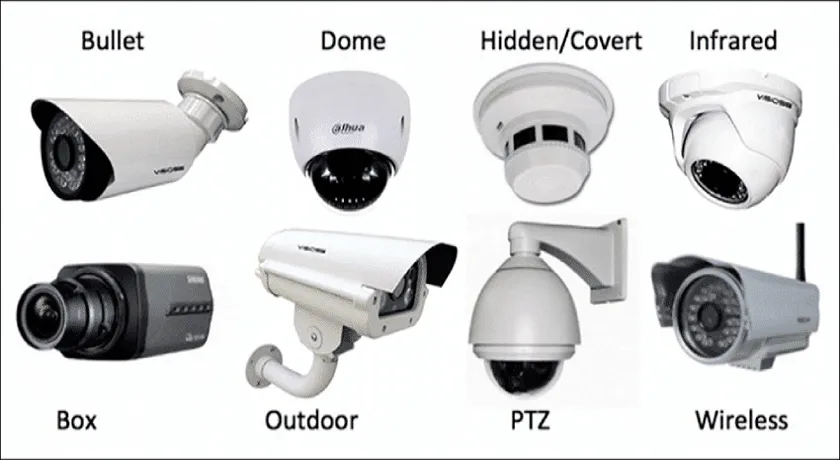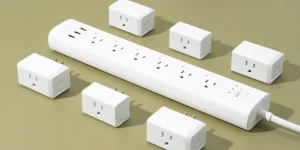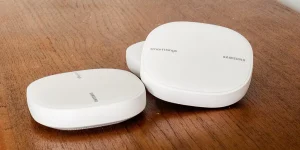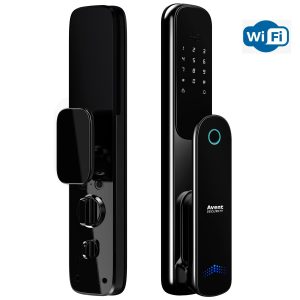Security Camera: What Is It For? How It Works, Applications, and Safe Usage Tips

Security cameras are becoming an essential part of home and business security systems. They help monitor surroundings, prevent crimes, and provide valuable evidence if needed. This article will explain the purpose of security cameras, how they work, their practical applications, and important safety guidelines for their use.
1. What Is a Security Camera Used For? (Introduction, Popular Types, and Benefits)
A security camera is a device designed to monitor and record activities in a particular area for security purposes. These cameras are typically installed in and around homes, businesses, and public spaces to help prevent theft, vandalism, and other criminal activities.
Popular Types of Security Cameras:
- CCTV (Closed Circuit Television): The most common type of security camera used for surveillance in private and commercial spaces. CCTV cameras transmit video signals to a specific location for monitoring and recording.
- IP Cameras (Internet Protocol Cameras): These cameras send video footage over the internet, allowing users to access real-time footage remotely via smartphones, tablets, or computers.
- Wireless Security Cameras: These cameras operate without the need for physical wiring. They rely on Wi-Fi signals to transmit data, making installation more flexible and convenient.
- Dome Cameras: Known for their discreet, dome-shaped design, these cameras are often used in retail environments. Their design makes them hard to determine which direction they are facing.
- Bullet Cameras: These cameras are typically long and cylindrical, ideal for outdoor use. They provide long-distance viewing and are highly visible, which acts as a deterrent to potential criminals.
Benefits of Using a Security Camera:
- Crime Prevention: Security cameras act as a deterrent to criminals by making it more difficult to commit crimes undetected.
- Remote Monitoring: With modern technology, many security cameras can be monitored remotely, giving homeowners and business owners peace of mind wherever they are.
- Evidence Collection: In the event of a crime or incident, security cameras can provide critical video footage as evidence for law enforcement or insurance claims.
- Peace of Mind: Knowing that there is a security system in place can help people feel safer and more secure in their homes or businesses.
2. How Does a Security Camera Work? (Principle of Operation and Key Components)
Security cameras work by capturing video footage of a designated area and transmitting or recording the footage for future review. The basic functionality remains the same for most types, although there are slight variations based on the camera type.
Key Components of a Security Camera:
- Lens: The lens is responsible for capturing light and images of the monitored area. It plays a key role in determining the camera’s field of view and image quality.
- Image Sensor: The image sensor converts the captured light into electrical signals, which are processed into video footage. Modern security cameras often use CCD (Charge-Coupled Device) or CMOS (Complementary Metal-Oxide-Semiconductor) sensors.
- Microphone (Optional): Some cameras are equipped with a built-in microphone that allows for audio recording in addition to video footage.
- Infrared (IR) LEDs: Many security cameras feature infrared LEDs that allow them to record clear footage even in low-light or dark environments.
- Storage Device: Security cameras typically store recorded footage on a local storage device like a hard drive, or they may use cloud storage to ensure data is safely backed up and accessible remotely.
- Power Supply: Security cameras need a power source to operate. Some cameras are wired directly to an electrical system, while others may use rechargeable batteries or be powered by solar panels.
How the Camera Works:
- Capturing Video: The camera’s lens captures light from the monitored area and focuses it onto the image sensor.
- Processing the Image: The image sensor processes the captured light and converts it into video data, which is then either transmitted live to a monitor or recorded for later review.
- Transmission/Recording: Depending on the type of camera, the video is either transmitted over cables (in the case of CCTV cameras) or via Wi-Fi (in the case of IP cameras). The footage may be stored locally or uploaded to a cloud-based server.
- Remote Access: Many modern security systems allow users to access their cameras remotely via apps or web portals, giving them the ability to monitor their property in real-time.
3. Where Are Security Cameras Used? (Practical Applications)
Security cameras are used in a wide variety of settings to ensure the safety and security of both individuals and property. They are commonly found in residential, commercial, and public environments.
Common Applications:
- Home Security: Homeowners install security cameras around their property, especially at entry points like doors and windows, to protect against burglaries and intrusions.
- Business Security: Businesses use security cameras to monitor employees, prevent theft, and safeguard inventory and sensitive information.
- Parking Lots and Garages: Security cameras are often used in parking areas to monitor vehicles and prevent car theft or vandalism.
- Public Spaces: Cameras in public areas, such as streets, parks, and airports, help maintain safety and order by providing surveillance of public activities.
- Industrial Sites: Factories and warehouses often install cameras to monitor workplace safety, prevent theft of goods, and ensure compliance with regulations.
Benefits of Using Security Cameras in Different Settings:
- Deterrence: The mere presence of security cameras can discourage criminal activity in high-risk areas.
- Enhanced Surveillance: Cameras provide a consistent and reliable means of monitoring areas that would otherwise be difficult to observe.
- Incident Documentation: In the event of a dispute or criminal activity, security cameras offer documented evidence that can aid in investigations or insurance claims.
4. How to Use a Security Camera Safely (Safety Tips and Important Considerations)
While security cameras are powerful tools for protecting your property, it’s important to use them correctly to ensure they are effective and secure. Here are some safety tips and best practices for using security cameras:
Safety Tips:
- Install Cameras in Strategic Locations: Position cameras to cover the most vulnerable areas, such as entryways, driveways, and high-traffic zones, while ensuring the privacy of others is respected.
- Ensure Proper Installation: Whether you’re installing cameras yourself or hiring professionals, make sure the cameras are securely mounted and that wires are properly hidden to prevent tampering.
- Monitor Access: Use strong passwords and encryption to protect your security camera feeds from unauthorized access. Many modern cameras allow you to set up two-factor authentication for added security.
- Maintain Your Cameras: Regularly check the lenses for dirt or obstructions, and ensure that all parts, such as the power supply, are functioning properly.
- Store Footage Safely: Store recorded footage in secure locations, either on a hard drive or in a cloud service, and regularly back up your data to prevent loss.
Legal Considerations:
- Privacy Laws: Be aware of local laws and regulations regarding video surveillance, especially in areas where people have a reasonable expectation of privacy, like inside homes or bathrooms.
- Notify Others: In some jurisdictions, it may be required to notify people if they are being filmed, particularly in business or commercial environments.
Conclusion
Security cameras are essential tools for monitoring and protecting properties. They serve a wide range of purposes, from preventing crimes to providing valuable evidence when needed. By understanding how security cameras work and following safety guidelines, you can make the most of this technology and ensure it operates effectively while keeping your property and loved ones safe.







